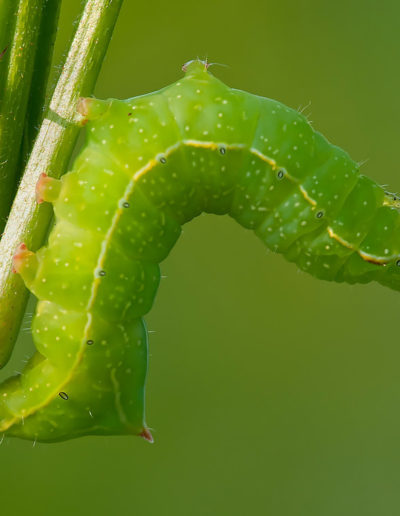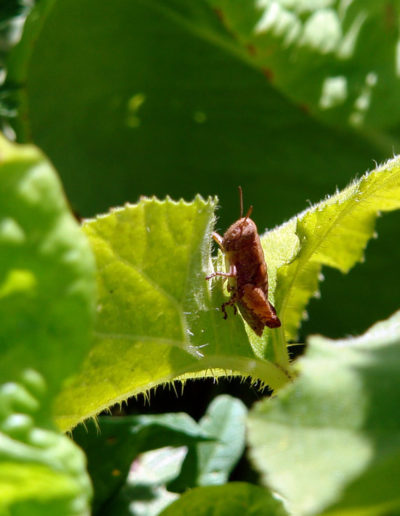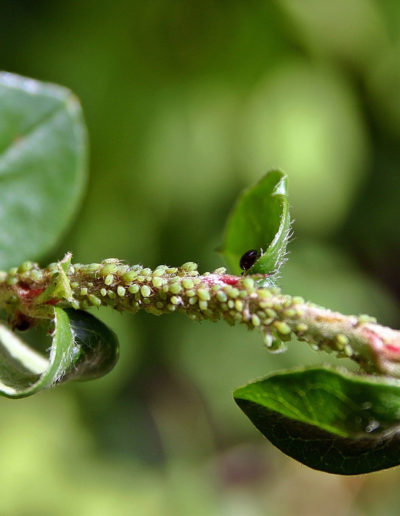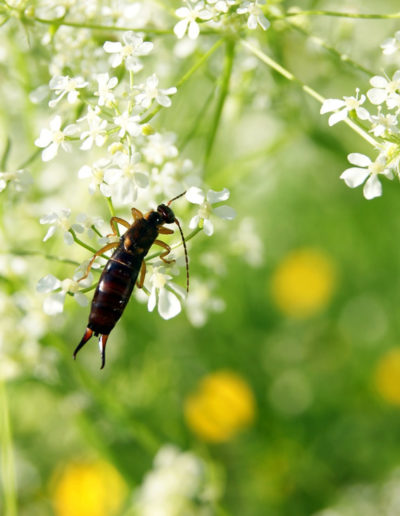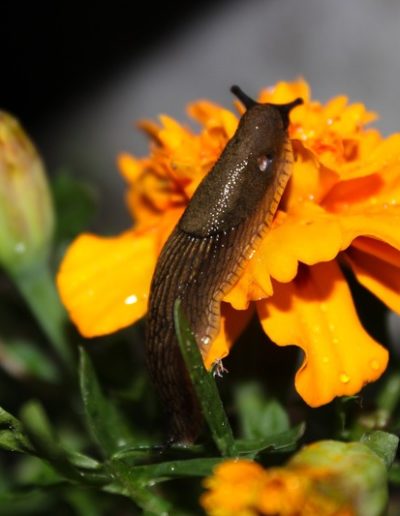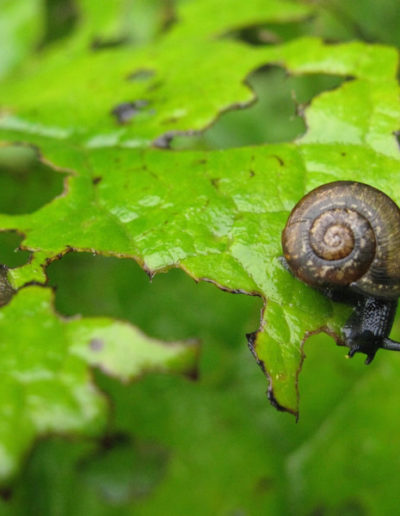Common Garden Pests
Aphids
Aphids are tiny, pear to oval shaped insects, growing up to 1/8th of an inch long. There are over 500 different species of aphids in Utah, varying in many different colors such as green, black, yellow, red and even purple! Some winged, some not. They are often found clustered on tips of stems, sucking the sap from the plant they’ve inhabited, eventually distorting and yellowing leaves and ruining blooms. Spreading sticky honeydew wherever they roam.
Because their eggs overwinter, it is important to treat any plants that were infected the previous year with a dormant spray. To treat plants with live and active aphids, you can use organic controls such as:
-Neem Oil Spray: Coating and smothering any live aphids as well as eggs with Neem Oil works by suffocating and smothering. Spray to the point of runoff.
-Ladybugs or Lacewings: Many local garden centers sell beneficial pests such as ladybugs or lacewings to eat up aphids and mites. One ladybug can eat up to 50 aphids a day, coming in containers ranging from 1500-9000. Release them into infected plants at dusk, since ladybugs do not fly at night! Not only will the ladybugs stay and eat until the aphids are gone, they will also be laying their own eggs which will soon hatch to continue feasting on the little pests!
-Spraying with Hose: The simplest way to get rid of aphids is to spray them off with a jet stream of water from the hose.
-Insecticidal Soap: Coat infected plants with an insecticidal soap to the point of runoff.
Slugs and Snails
Slugs and Snails are a common garden nuisance, both known to put holes in flowers and leaves of a wide range of plants. Leaving behind a sticky, shiny trail everywhere they go, makes it easy to identify them as the culprit. This is an easy sign to look for, seeing as you most likely won’t see them during the day as they typically prefer to hide out in cool and shaded areas. For this reason, make sure your garden bed areas are clean of debris that they might hide under and pull mulch away from the base of plants.
For multiple ways to rid these pests from your garden beds, click the link below!
Caterpillars
When it comes to ridding caterpillars of your gardens or planter beds, you may want to try and identify which ones are feasting upon your plants. This is because caterpillars are the larval stage of butterflies and moths and depending on which one you’ve found, are treated differently. Because many people enjoy butterflies in their yards and they don’t tend to cause any trouble, these caterpillars can be left alone or picked off and moved somewhere else.
Moth larva are a different story since they will lay eggs in plants. To prevent this from happening, cover your plants with floating row covers. Note that these will need to be removed when food plants need to be pollinated to produce, around the time they start to bloom.
Ways to prevent or rid nuisance caterpillars/moths:
-Handpicking: Handpick them off and dispose
-Floating row covers: Cover just after planting to prevent the laying of eggs by moths
-BT Spray (Bacillus thuringiensis): An insecticide that poisons young and actively eating caterpillars
-Bird Bath: Attract birds to the area with a bird bath, as birds think caterpillars make a great snack!
-Clean up Debris: Cleaning up debris after harvest can eliminate potential overwintering sites for pupae
Grasshoppers
Dealing with grasshoppers can be a frustrating ordeal! Not only can they travel far and wide from where they were hatched, but they will also eat just about everything and anything if they’re hungry enough. Preferring to eat leaves off of vegetable crops, grains and corn. But will also feast on flowers, turf grass, shrubs, trees, ornamentals, fruit and more. When it comes to treating grasshoppers, it can be tricky and works more effectively when treated in larger areas, entire neighborhood for example. This is because yes, you may treat and kill the grasshoppers in your yard, but that won’t stop the neighboring grasshoppers to find their way to you in a matter of time.
As per Utah State University Extension, here are a few ways to combat grasshoppers:
-Damage from small populations can be tolerated.
-Exclude grasshoppers from plants using fine mesh material (row covers).
-Pesticide-based management should occur on a larger scale (e.g., a neighborhood) rather than on an individual property.
-Use insecticide baits containing Nosema locustae or wheat bran + carbaryl.
-Apply an insecticide (carbamate; pyrethroid) to protect specific plants.
Earwigs
Finding earwigs in your yard isn’t always a bad sign, as they can be beneficial in eating other pests such as aphids, mites, caterpillars and scale. Though, when they become an infestation is when you may want to decide how you’d like to treat the problem. Earwigs are omnivores meaning they’ll eat insects, plants and more. Earwigs become active at night, and may choose to feast on flowers, fruit, leaves and stems.
As per Utah State University Extension, here are a few ways to treat an earwig infestation:
-Place corrugated cardboard on soil, as earwigs will hide inside and underneath it during the day. Dispose of the cardboard in a sealed plastic bag every 3 days. Adding a food bait to the cardboard can help lure more in.
-Punch holes in the lid and top sides of a plastic yogurt or sour cream container, and bury the bottom in a garden or flower bed where earwigs are causing plant damage. Check the traps several times per week, dispose of the earwigs, and replenish with fresh bait.
–Earwigs are weak fliers , and primarily disperse by crawling. Place a band of sticky adhesive, such as tangletrap*, around a tree trunk or plant stem to exclude them. Apply the adhesive to a surface such as duct tape to protect the plant.
-Prevent their entry into buildings by sealing cracks and crevices, installing under-door-sweeps, and ensuring that screens are tightly sealed. Remove vegetation and sheltering debris (including mulches) adjacent to buildings in areas where earwigs are likely to gain access, such as doorways and basement window wells. Apply insecticides as a barrier treatment around foundations.
-Only apply insecticides when deemed necessary to conserve beneficial insects and mites.


